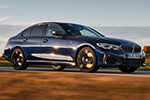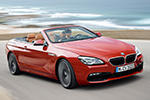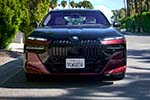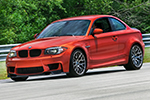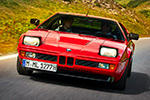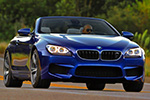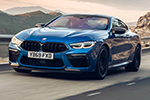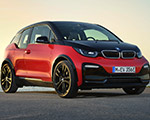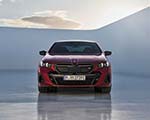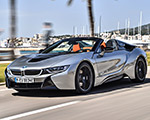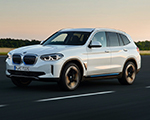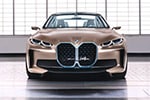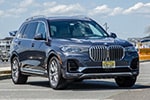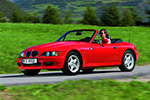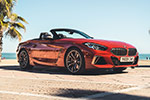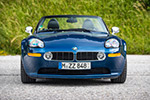This year, the pace car for the 2025 BMW Berlin Marathon was none other than the all-new, all-electric BMW iX3 Neue Klasse. BMW has been the lead sponsor of the aptly named BMW Berlin Marathon since 2011. For 2025, more than 55,000 runners from 160 countries took part. BMW’s name and vehicles were visible throughout the event. Yours truly was not only reporting on the marathon for BMWBLOG, but also running in the full marathon.
A Fleet of BMW Support Vehicles
No fewer than 65 BMW vehicles were in use over the weekend, including about fifteen BMW motorbikes. The star of the show, however, was the all-new BMW iX3. It served as the official pace vehicle for the professional runners who completed the course in just over two hours. I had a chance to see the iX3 pace car up close and noticed it carried a factory BMW roof rack with the LED pacing sign mounted to the roof gutters. It looked more like the setup you’d see on a 3 Series than the clamp-on style used with X3 roof rails.
Runners began their marathon weekend at the Marathon Expo, held at the Messe Center, about 45 minutes from the start line. A quick ride on the U-Bahn—Berlin’s subway—got us there. Right at the entrance, BMW had a strong presence, with an iX2, i5, and i4 on display. Despite 55,000 runners needing ID checks, bib assignments, and wristbands, the process was impressively smooth.
The Marathon Expo Experience
An email weeks earlier recommended booking an appointment for bib pickup. The expo ran Thursday through Saturday, with a separate lane for walk-ins, but the appointment line was quick and efficient. The athlete wristband was surprisingly interesting: about one centimeter wide, made from sturdy yet slick fabric, cut to size, and heat-sealed. In the days leading up to the race, these distinct BMW Berlin Marathon wristbands made it easy to spot fellow runners around our hotel.
Starting at the Brandenburg Gate
The start and finish of the marathon were set against the iconic Brandenburg Gate. The course is famous for being flat and fast. At essentially sea level—115 feet (35 meters)—it’s the opposite of running somewhere like Colorado Springs. Course guides promise minimal elevation change, and they’re not kidding. Across the 26.2 miles (42.2 km), the net gain is only 241 feet (73 meters). After running it, I couldn’t tell you where any of that elevation gain even was—it’s that subtle.
I’m a temperature-sensitive runner, and unfortunately for me, 2025 brought record-breaking heat. Temperatures were 15°C above the seasonal average, at 27°C (81°F) instead of the usual 12°C (mid-50s °F). Organizers warned us repeatedly about the risks, and every water stop was well-stocked with water, sports drink, and volunteers ready with pitchers to refill bottles. The volunteers deserve huge credit—they kept 55,000 runners hydrated. For those wondering, yes, there were also plenty of portable restrooms stationed along the route.
My Race Day Journey
As for my race, I started in wave 3, about an hour after the pros and fastest amateurs. In heat like this, earlier is always better, so waiting around Berlin’s Tiergarten for my 10:10 a.m. start wasn’t ideal. But once I was in the chute, optimism took over.
As we edged toward the start line, I heard dozens of languages around me, music blasting, and even flames shooting off the top of the start gate. It was spectacular—I wish I’d filmed it. Crossing under that gate with thousands of other runners, music pumping, you feel light as air. Within minutes, we split around the Siegessäule Victory Column, surged out of the Tiergarten, and we were on our way.
Crossing the Finish Line
I had aimed for a 4-hour finish but reminded myself to run the race in front of me, not the one I planned. The first 10K was slower than expected, but I told myself it was fine—better that than burning out. By mile 11 (18 km), I was shocked to already see runners getting medical help on the sidelines. I tried picking up the pace, but it only lasted 5K before I had to start walking breaks. At first, I limited them to water stations, but soon they came more often. Still, somehow, I managed to pick myself up and run again between breaks.
The spectators were incredible. Berlin’s streets were lined with people, many calling out names from our bibs. My personal favorite cheer came from a group of Brits who spotted me and shouted, “Go King Charles!”
The BMW Berlin Marathon truly feels like a city-wide celebration. Despite the massive crowd, everything flowed smoothly. It’s hard not to be impressed when you realize 55,000 people are running beside you, yet it all works.
My marathon personal record is 3:45. I’m not a fast runner, but this year my goal was simple: finish. And I did, crossing the line in 4:36. At first, I was disappointed not to be closer to my goal, but now that I’ve had time to reflect, I’m happy with the result. Everyone out there was really racing themselves, testing their limits in tough conditions.
Would I run Berlin again? Right now, my legs are too sore to even consider it. But ask me again in a few weeks—I just might say yes.































